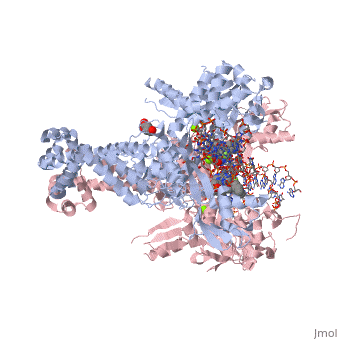Structure
is a synthetic antimicrobial fluoroquinolone with the molecular formula C21H24FN3O4 and an average molecular weight of 401.438 g/mol [1]. Quinolones are compounds defined by an aromatic ring with a substituted carboxyl group at one or more positions, while fluoroquinolones, derivatives of quinolones, contain a fluoride atom bound to the aromatic ring. [2]. The compound is able to accept eight hydrogen bonds and donate two [1]. The structure of the drug can also be found in the form of a monohydrochloride salt [2].
Function
Moxifloxacin is a fluoroquinolone antibiotic that also acts as an antibacterial compound [1]. Its an antibiotic that kills bacteria by inhibiting their ability to replicate through hindering the function of type 2 topoisomerase enzyme. The drug is typically taken in 400mg tablets daily, ranging from five to fourteen days. When dealing with more severe infections, moxifloxacin is administered in 400mg through intravenous injections [3]. Moxifloxacin is active against gram-positive and gram-negative bacteria with an increased affinity for gram-positive bacteria, such as the multidrug-resistant strains of Streptococcus pneumoniae [3]. Other examples of infections for which moxifloxacin is prescribed include bronchitis, sinusitis, skin or soft tissue infection, anthrax prophylaxis, and tuberculosis [4]. The function of moxifloxacin is inhibited by the consumption of cations, but the precise mechanism of this process is unknown. One possible explanation for the decreased function of moxifloxacin in the presence of cations is the binding of cations to the compound causing chelation, resulting in a decreased amount of drug available to interact with the bacteria. Alternatively, the presence of cations may interact with the drug’s target, DNA , which decreases its effectiveness [5].
Mechanism
Moxifloxacin is an antibiotic that works by inhibiting the function of two bacterial enzymes, topoisomerase II (DNA Gyrase) and topoisomerase IV, both of which are necessary for bacterial DNA replication [6]. DNA Gyrase works by inducing supercoils in DNA, and by unwinding DNA during replication, thus relieving torsional stress as helicase separates the double strand [7]. Topoisomerase IV causes decatenation, the unlinking of strands of tangled DNA, a function also necessary for DNA replication [8]. Moxifloxacin is taken up by human phagocytic leukocytes, such as neutrophils and macrophages, where it remains active against obligate intracellular bacterial pathogens [9]. Moxifloxacin, like other quinolones, may be able to enter bacterial cells through porins, which are small beta-barrel channels through their membranes [10]. Moxifloxacin can then bind directly to its target, topoisomerase. Topoisomerases work by binding to a segment, called a G segment, and simultaneously binding a second DNA segment called the T segment. Topoisomerase cleaves the
, shown in model, passes the T segment (not pictured) through the cleaved G segment, and then ligates the G segment back together. Topoisomerases require a magnesium ion for the cleavage of the G segment. Moxifloxacin prevents the action of topoisomerases by coordinating two bonds to a serine and a glutamic acid on the enzyme () shown on topoisomerase IV from A. baumanni) using the and associated water molecules. By this mechanism, moxifloxacin is able to modulate the activity of the bacterial topoisomerase [11].
Human Uses of Moxifloxacin
Moxifloxacin is a synthetic antibiotic drug designed for oral and intravenous administration that functions by inhibiting bacterial topoisomerase enzymes. While humans produce these same enzymes, human topoisomerases do not have the serine and glutamic acid residues needed for the action of the drug [11]. It is prescribed to treat various infections caused by gram-positive and gram-negative bacteria such as acute flare-ups of chronic bronchitis, pneumonia, acute bacterial infection of the sinuses, complicated intra-abdominal infections, and pelvic inflammatory disease [12]. Recently, moxifloxacin has been found to treat dermatologic pathogens on the skin caused by human and animal bites. Moxifloxacin can be used for a number of treatments; however, its use should be carefully administered in serious infections because it can lead to severe side effects [2] such as acute allergic reactions, diarrhea, connective tissue problems, muscle pain, depression, agitation, renal problems and confusion [4]. Therefore, moxifloxacin should be used exclusively for infections that cannot be treated with alternative, safer antibiotics.

